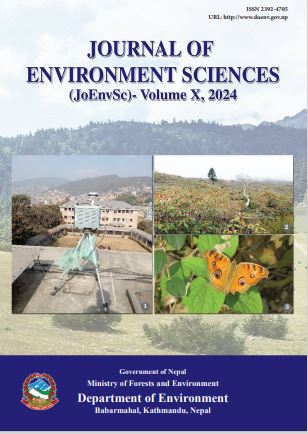Butterfly Diversity and Distribution in Lowland of Western Nepal: A Case Study of Thakurbaba Municipality, Bardiya, Nepal
DOI:
https://doi.org/10.3126/jes.v10i1.66973Keywords:
Disturbance, Ecological Habitat, Lepidoptera, Similarity Coefficient, TransectAbstract
Butterflies are insects known for their large, colorful wings and distinctive, fluttering flight. They serve as both pollinators and important environmental indicators. Previous researchers have predominantly centered on assessing the status and creating checklists of various butterfly species across the country. However, there has been a notable lack of comprehensive, habitat-focused investigations into butterflies. In the face of ongoing, rapid anthropogenic development and environmental changes, it is imperative to regularly monitor the status of butterflies in diverse habitats and consider the influence of environmental factors. This study was conducted during the winter season (January 2020) to assess the spatial distribution and diversity of butterflies in Thakurbaba Municipality, Bardiya. The study was conducted in three riverbank, forest, and farmland habitats. Sampling was carried out along a line transect of 10 meters length and butterflies encountered within 5 meters wide along each side were recorded. A total of 12 transects across the different habitats were studied: 5 in farmland, 3 in riverbank, and 4 in forest respectively. Altogether 130 individual butterflies belonging to 27 species, 18 genera, and 4 families were recorded from three different habitats. Nymphalidae was the most abundant family with 18 species. The forest seemed highly diverse and rich in butterflies during the study period followed by the riverbank. Additionally, evenness was higher in the riverbank than in the other two habitats. Intensive and regular monitoring is necessary to determine butterflies' seasonal variability and recognize their ecological significance in the study area.




